“Coming up with an intelligently designed super pig, Bong Joon-ho and team crafts emotions infusing animal oriented drama; and it ends up being one of the best films of the year.”
After watching gamut of films on animal love, from an emotionally heart rending Hachi – A Dog’s Tale, super-entertaining Marley and Me, picturesque Life of Pi and recently partly good and partly disappointing A Dog’s Purpose, and some others; it was refreshing to watch an ultra imaginative tale of an audaciously designed super pig, Okja which underwent a lot of hard work in special effects and execution, only to excel. Instead of taking a peak into the seeming idealistic vegan ideology of the film (which is handled very subtly without being grandiloquent about it); as a cinema lover, it would be better to analyse the film on a cinematic level and delve into the screenplay of the film, which happens to be an illustrious example of “How to Write a Screenplay”, and follows almost all the lessons by the script writing Guru, Syd Field. The dramatic premise of Okja is very simple. It is based on the bond of love that the protagonist Mija (played by Ahn Seo-Hyun) shares with a super pig called Okja and what she does when she comes to know Okja’s fate; the story which is weaved as follows –
Act I: Set-Up –
The film fades-in with a boisterous presentation given by the new visionary CEO of the Mirando Corporation, Lucy Mirando in the year 2007, on a grotesque super pig which is envisioned to circumvent all the perilous paucity of food that is worrying the mankind; a scene that uses the technique of pictures in pictures.
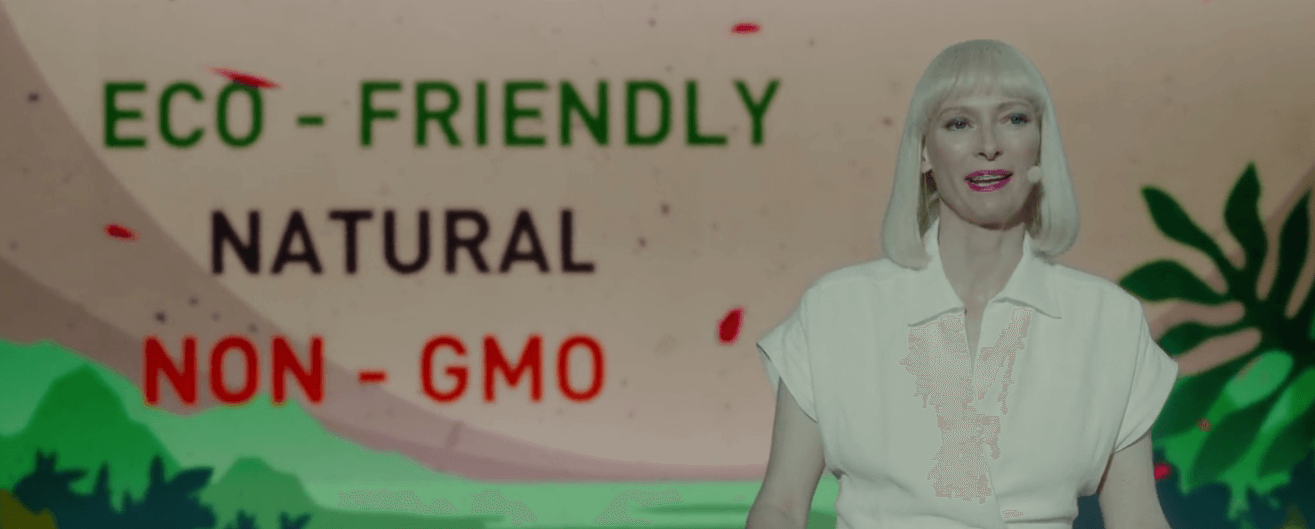
Later on, the audience get the first fleeting glimpse of the super piglet. Lucy also announces a contest based on the best nurturing of the super pig where they will be sent to the different regions of the world on experimental basis, and draw out observations and analysis to declare the winner who would carry out the best upbringing and nourishment, of course in the vigilant auspices of the scientists delegated to supervise the processes in different regions and climates.
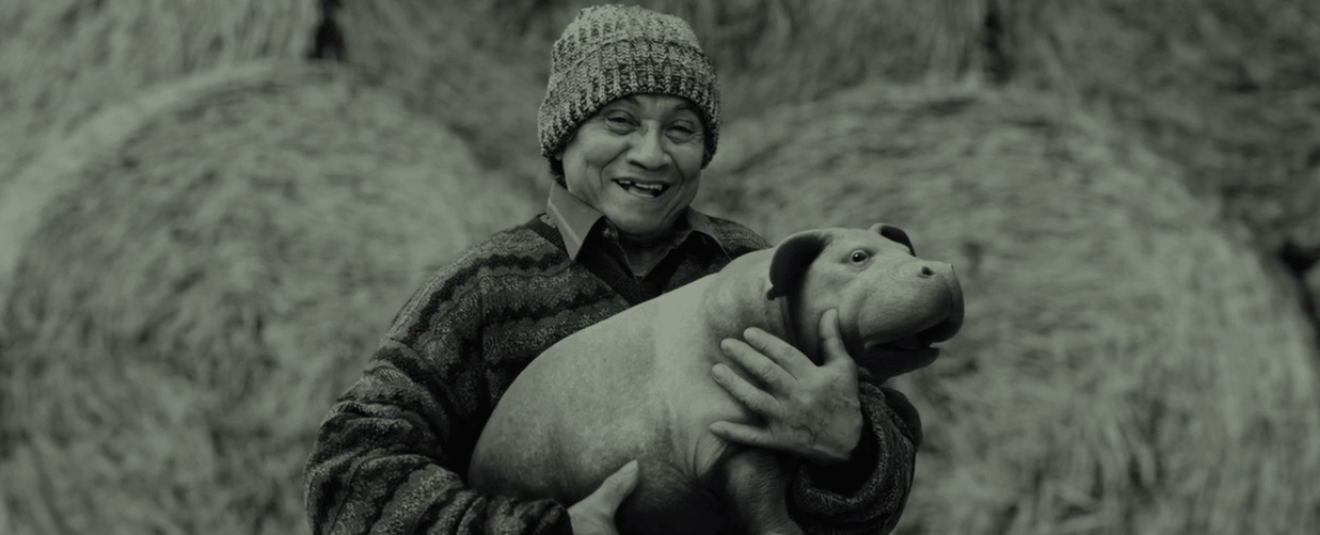
And then it all fades out to ten years later, in 2017 at a place, far away from New York, on a secluded picturesque mountain, where Mija lives with her grandpa and the super pig, Okja.
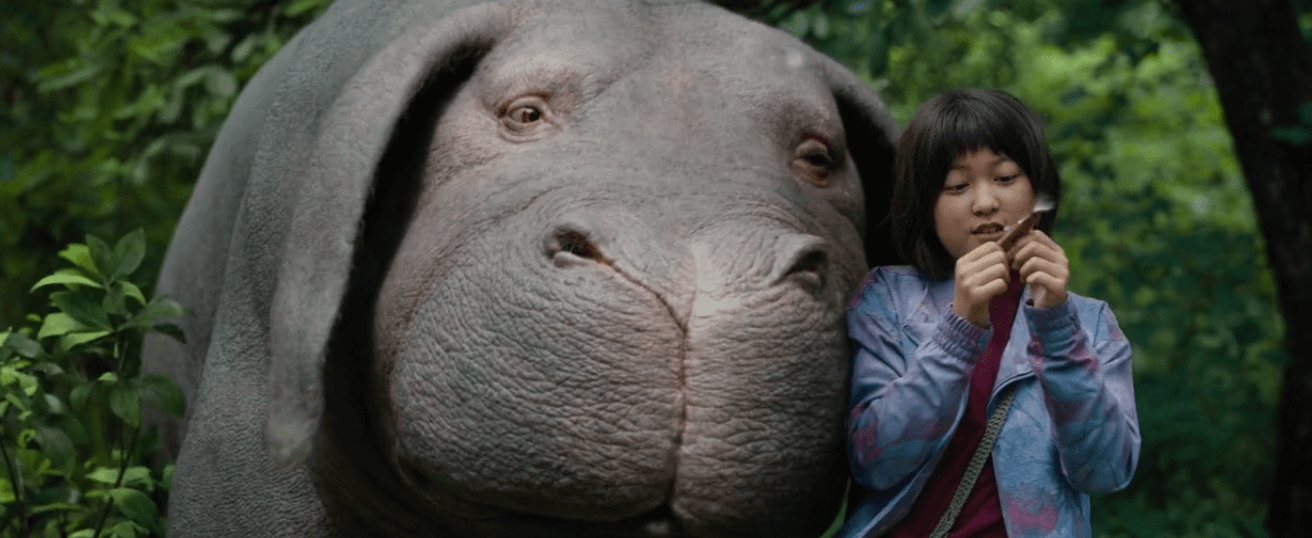
There are some narratives that establish the character of Mija and Okja and their bonding. There are scenes in which Okja dashes into a tree leading to a torrential fall of cornucopias fruits (tomatoes), or plunges headlong into a reverie to supply buoyancy induced galore of fishes; which only goes to say that Okja is an intelligent hybrid; and it becomes quite evident when she manoeuvres an undulating contraption to save Mija from falling into the lethal ravine; after which we see a heart warming scene of Okja hugging Mija establishing their adorable camaraderie.
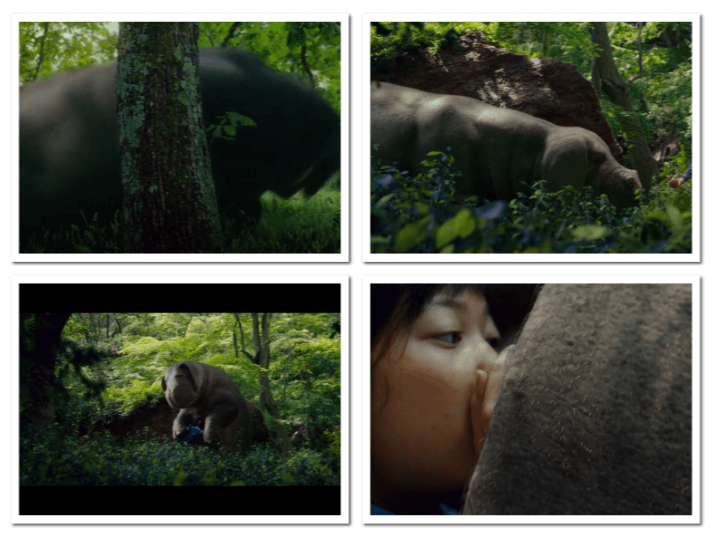
Enter Johnny Wilcox (played by Jake Gyllenhaal), a famous and celebrated TV representative and an animal loving veterinarian from New York, who comes with his team after an arduous and tiresome mountain climbing to have conduct an inspection on the super pig and on the basis of merit, take her to New York. The sight of Okja conspicuous startles Johnny and he lauds how Okja has been brought up and declares her as the number one super pig.
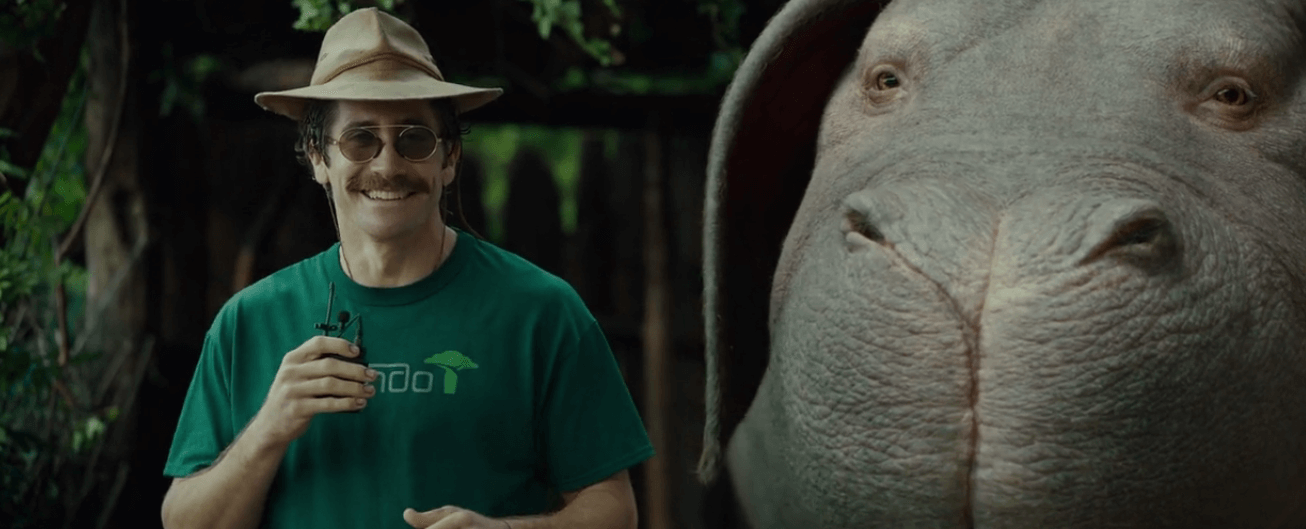
Follows a scene in which Mundo Park (played by Yoon Je-moon) talks with Mija’s grandfather and after fawning on the megastar Johnny for a while, Mija has to leave with her grandpa, as he says that they would have to visit her parents’ grave.
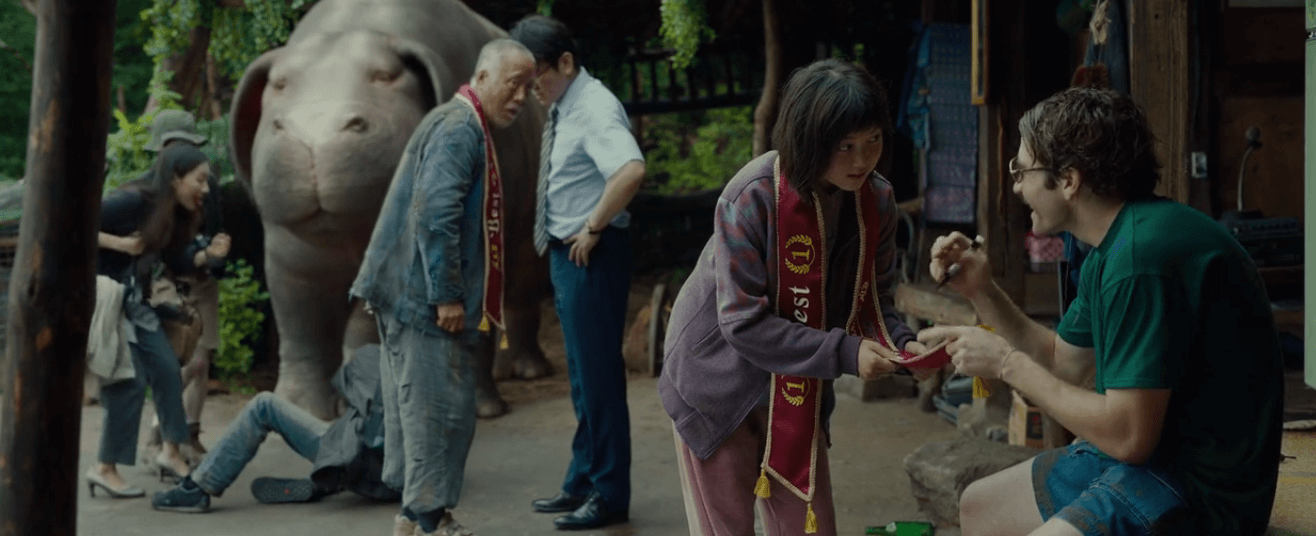
Consequently, in the next sequence, Mija’s grandfather explains her that Okja is Mirando’s property and she would be taken away; and he always gives her a golden pig memento hoarded by him for ages to present her on the wedding of Mija. The Golden Pig becomes the motif which stays with Mija in the succession of the story. Now, Mija refuses any bait given at the cost of Okja, and sprints back home to find Okja, only to find out that she has been taken away.
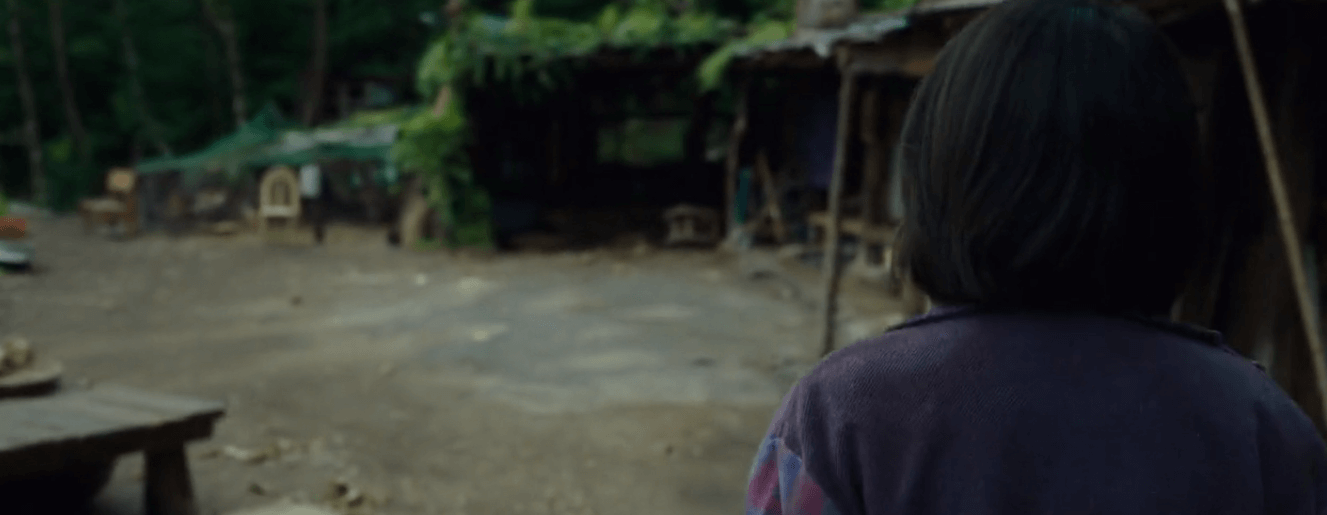
She sprints her lungs out between the treacherous mountains to know that Okja is nowhere to be seen; which leads to the Plot Point 1 of the screenplay, in which Mija decides to leave the mountains and go the Mirando Cooperation’s office to save Okja.
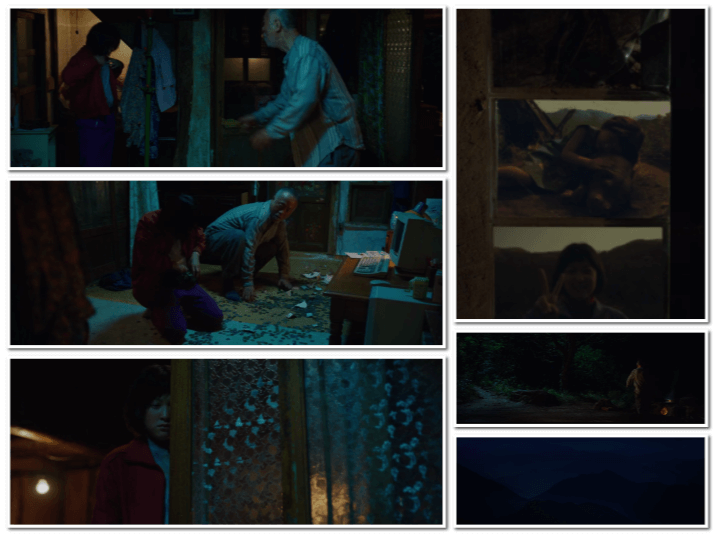
Act II: Confrontation –
By this time (nearly 35 minutes in the runtime), the dramatic need of the protagonist Mija is well defined, which is to save Okja from the further atrocities; and the audiences connect to the emotional sensation that it evokes. The story takes Mija to a clamorous corporate set up in Seoul to find Okja. The audiences watch Mija amidst the crowd; clueless, anxious and vulnerable in the moment.
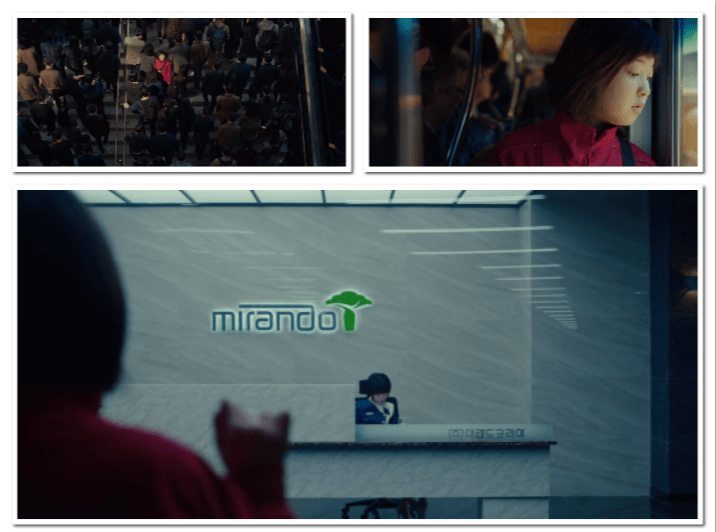
Now, while the receptionist is nonchalantly chatting in her messenger, a scene backed by the aural elements of chattering voices of notifications; Mija wants to know about Okja. When she observes that the receptionist is placidly unaltered with Mija’s trivial presence; Mija decides to break into the glass door; and the sequence might be intentional or inadvertent or may be a simple cause and effect disposition created by the makers but an audience may draw the parallel between the sequence of Mija breaking into the glass and Okja dashing into the tree.
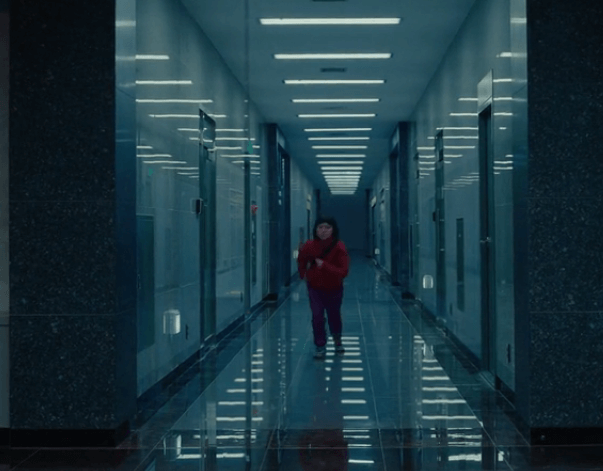
Mija sees that Okja is going to be transferred in a truck, and her natural propensity makes her incessantly chase the truck ultimately intercepted by the truck of Animal Liberation Front, a group of animal loving people who rescue animals from places where they are facing animal cruelty, be it a slaughterhouse or even a zoo. ALF with all the innocuous methods of self defence and no harmful attacks that suits their conviction and ideologies manages to rescue Okja, but they do so for only time. Jay, the leader of ALF (played by explain Mija about the super pig scam and ask her to allow Okja to go to Mirando Corporation in New York, so that the whole swindle can be exposed in front of the world. But, they don’t want to send her without Mija’s consent. In a narrative, the translator K (played by Steven Yeun) tells a lie about Mija’s agreement, when Mija actually says that she wants to take Okja back to the mountains. He does it for the big cause that would unveil the malevolent business pursuit Mirando Corporation is ruthlessly carrying out.
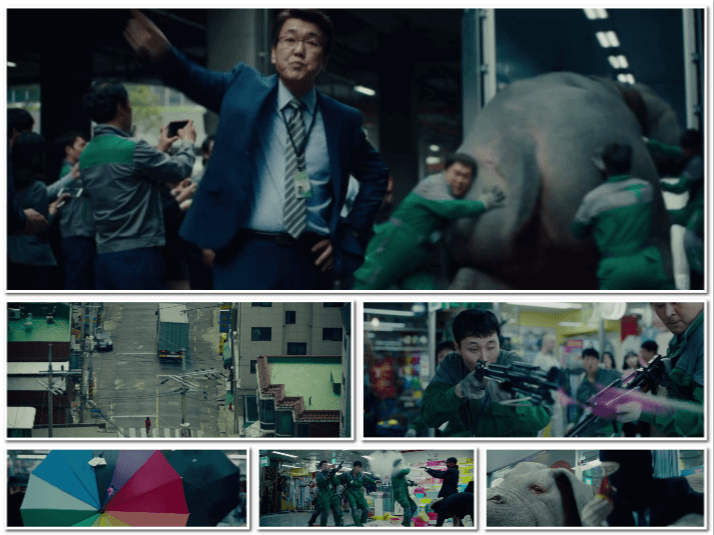
Okja is ensnared by Mirando again, but in the meanwhile, there is a video that goes viral of Okja and Mija agonised by the corporation’s inhumane methods of capturing the poor animal. Now, Lucy Mirando is in a quagmire that can defame the whole company and consequently cause irrevocable losses. But, she thinks of an atrocious plan to organize an event of Okja and Mija’s Goosebumps imbuing reunion to depict the generosity of a rather ruthless organization. Okja is then transferred to New York and we witness an eye-catching shot of the city, which, in a perspective looks like some kind of statistics, just the way any megacity of the world would look like.
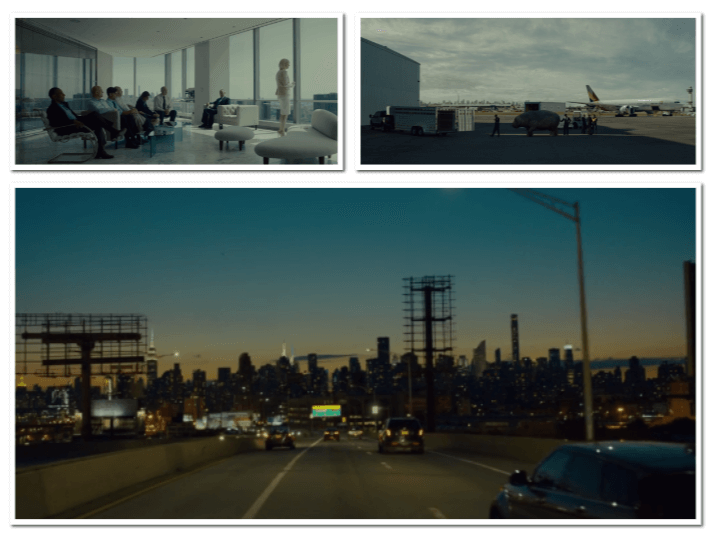
As Johnny welcomes Okja into the experiment cage, ALF feels a sense of tangible remorse after watching the outrage carried out with the animal. But Jay consoles the team to be mentally strong, just like Mija who has been to allow them to pursue the mission, only to get to know by K, the translator, that it is not true. Jay fires K immediately. In the meantime, Mija is taken to New York, for the “reunion”. Mija also learns a bit of English in the meantime. There are some shots of Mija reading the translation book.
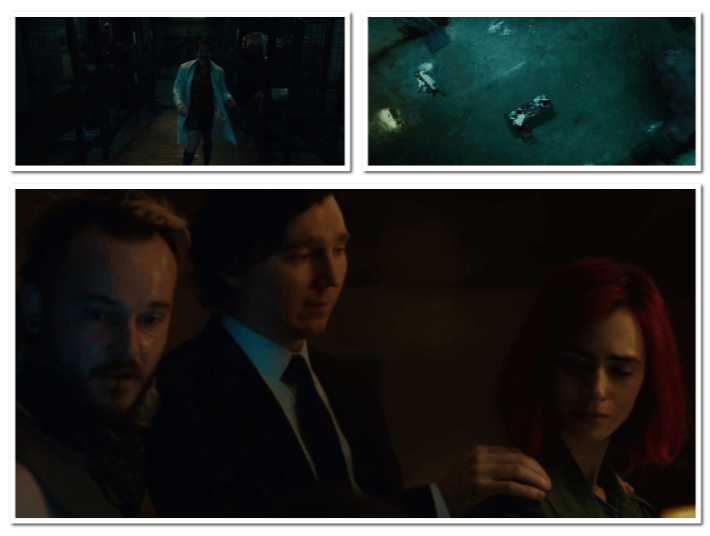
ALF decides to rescue Okja again and while the city of New York is celebrating the festivity of the occasion in which the prestigious Mirando Corporation would seemingly create an emotional reunion; Jay breaks into Mija’s room to apologize and assure her that Okja would be emancipated from this entangling havoc. This becomes the Plot Point 2 of the screenplay which takes the film to the resolution. This scene is shot with camera angles that could capture both Jay and Mija in the same frame with using a mirror that is not incongruous and happens to be just the part of the interior.
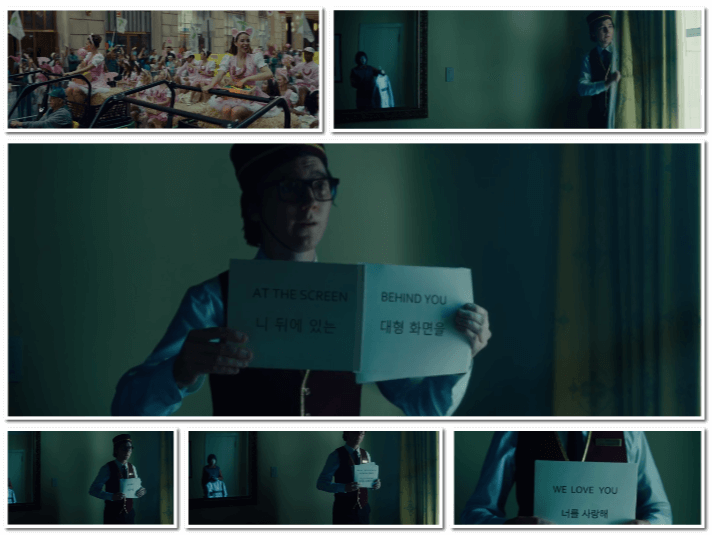
Act III: The Resolution –
The Act 3, The Resoltion, is nothing but how ALF camouflages itself in the celebrating crowd and exposes the wrongdoings of Mirado Company with a video that makes people throw bottles on Johnny and the ultimately the scenario breaks into a jostle and chaotic pandemonium. ALF, of course with Mija tries to save the super pig from further plights intertwined with some moments of extremely palpable emotions; like how Mija saves Okja, when Jay tries to attack her because he thinks that Okja would gulp Mija, followed by Okja showing her immense affection towards Mija. In comes Nancy, Lucy’s twin sister, who is more brainy, shrewd and of course more malevolent in her methods than Lucy. Under her direction, ALF’s rescue operation is again intercepted with impediment of private security of the organization and Okja finds herself in the slaughterhouse.
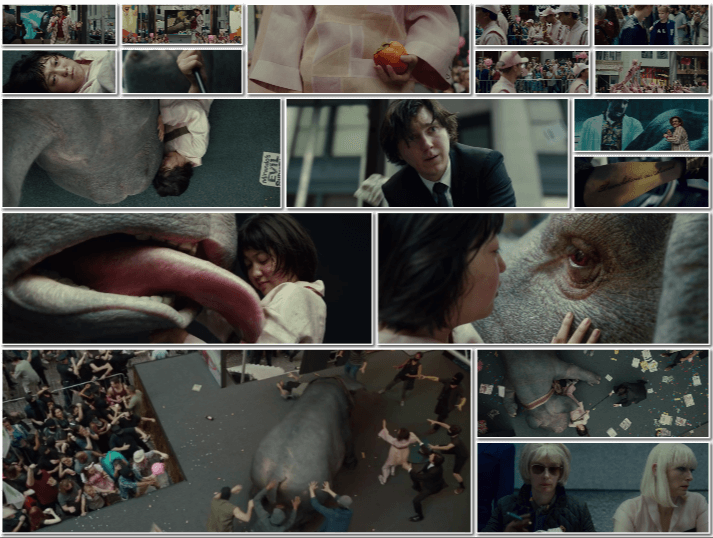
Jay and Mija break into the slaughter house to save Okja and the sequences in which Mija tries to save her from being butchered puts the audiences at the edge of the seat, while the audiences also get to see the brutality that has been carried out using the advanced technologies of butchering. Nancy interrupts the rescue with her team, only to be proffered an exchange of Okja’s dear life against the Motif of the film, The Golden Pig.
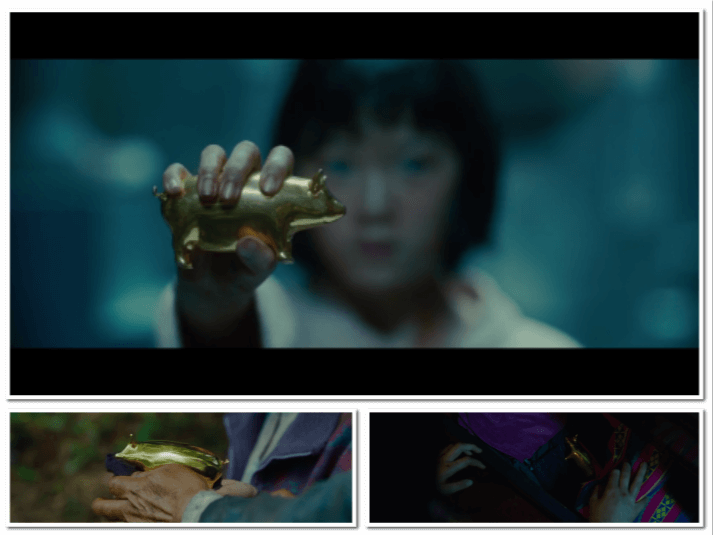
Nancy finds that the golden pig would be more lucrative than the only super pig Mija wants to save and so, she orders her henchman to stop the process when she was just going to turn into just a meat, and this makes up for the resolving denouement. By doing so, it can said that Mija bought love by business.
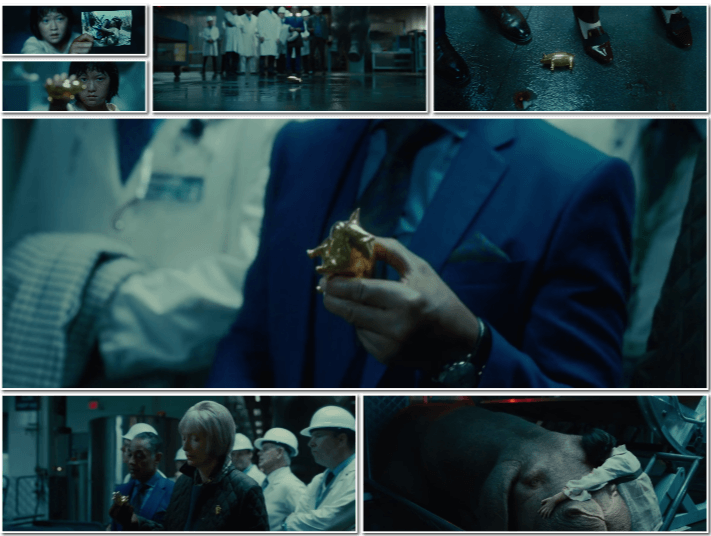
While Jay and Mija take Okja out of the barn, one of the super pigs pushes a piglet out of the fence and Mija takes her to the mountain and we see some shots of Okja, Mija and Piglet; and Mija having dinner with her grandpa in the conclusion.
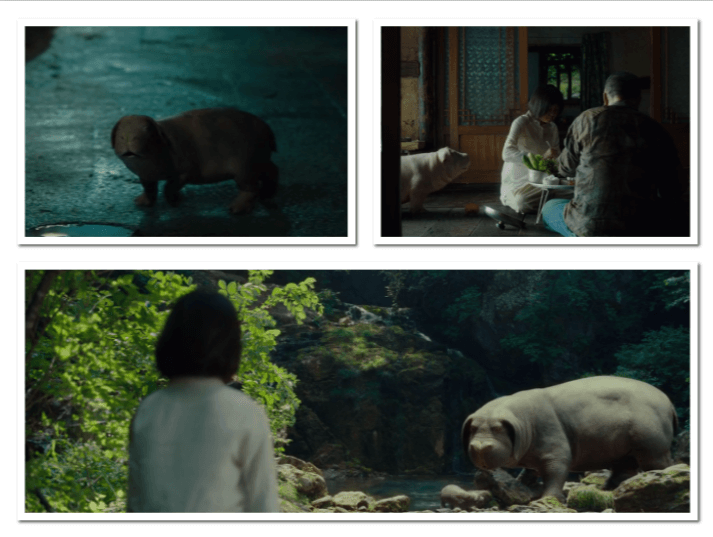
Culminating myriad emotions, backed with an iridescent cinematography and convictional direction, Okja makes its way into the best films of the year. But among other praise worthy facets; where Okja happens to be triumphant is in the design of the super pig, which is an amalgamation of the traits of pig, hippopotamus, elephants and manatees. According to director, Bong Joon-ho; “The Visual Effects team had sculpted the animal that would be not only plausible as a genetically-engineered meat producer, but would also appeal to the audience of the film.” The assiduous creation, before coming to fruition had undergone a lot of trial and error. If it had bigger eyes than it would look just cute in any circumstances and instil entertainment than sympathy and the audience would fail to identify Okja in its emotional archetype. But the team competently managed to make Okja look lachrymose and pity rousing. It was challenging to execute the “make-believe”. The early designs of the creature can be seen in the below collage.
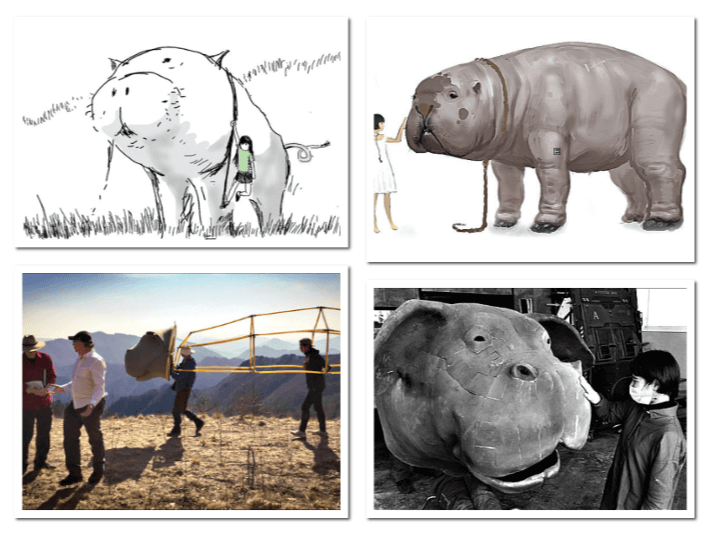
Another aspect that would need to be extolled is its sound design – How the team has designed the grunts and growls of the creature without making it sound screechy and unpleasant to ears. The film, of course displays some good performances in Mija, Johnny, Jay and Lucy. The mountains that are chosen are really beautiful and the colourful tableau of the images dispels every doubt on the proficiency of the cinematography.
The emotional aspect of Okja is handled with tangible sensitivity in such a way that it doesn’t look like an anti-non-vegetarian campaign, but even if it converts people into vegan, it would be a personal achievement for the team. Having said that, at a cinematic level, whenever the films about “a human being’s love for an animal” would be talked about, this film would have a personal slice of the history; and that is what Okja achieves…
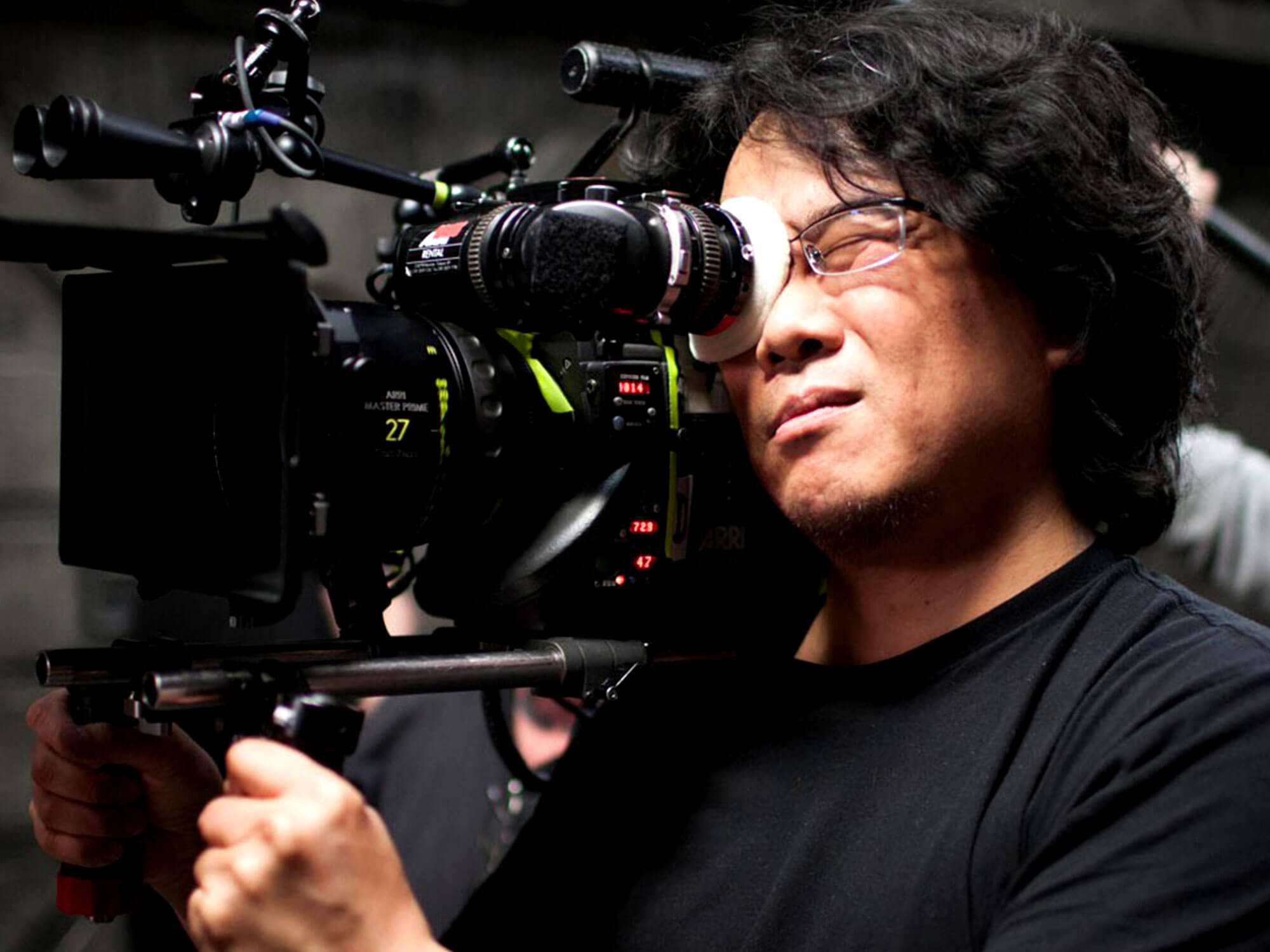
Film Appreciation / Treatise
Okja [2017]
Love versus Business
Cast – Ahn Seo-Hyun, Tida Swinton, Paul Dano, Jake Gyllenhaal, Byun He-Bong, Steven Yeun, Lily Collins, Yun Je-Moon, Shirley Henderson, Daniel Henshall, Devon Bostick, Choi Woo-Shik, Gian Carlo Esposito
Produced by – Plan B Entertainment and Lewis Pictures
Presented by – Netflix
Music – Jaeil Jung
Cinematography – Darius Khondji
Edited by – Yang Jin-mo
Directed by – Bong Joon-ho



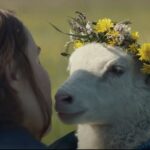




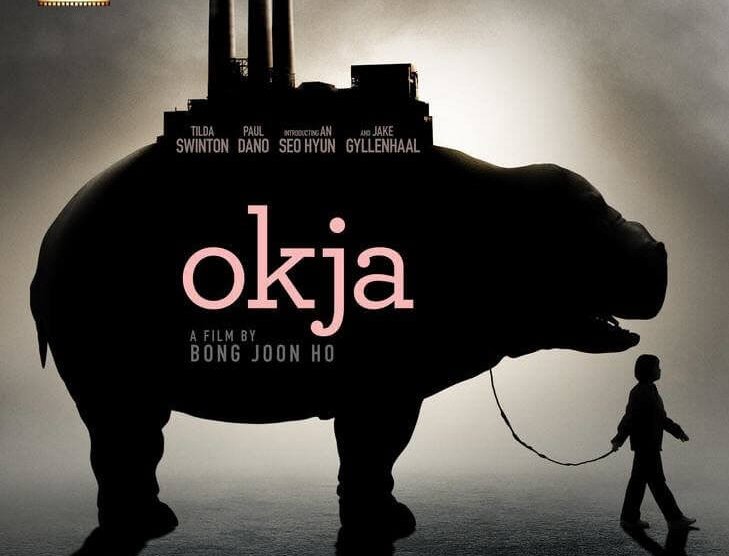

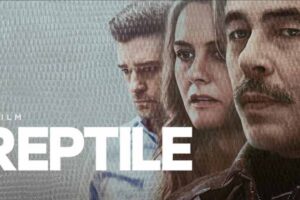




Add Comment